Naipes ‘Miguelito’
The standard Spanish-suited 'Parisian' style (Tipo Frances) is based on models exported to South America by French manufacturers during the nineteenth century.

Naipes ‘Miguelito’ manufactured by Camilloni Ltda, Montevideo, c.1950
The box (shown right) and the four of cups show young Miguelito setting off to school at a brisk march. The manufacturer’s name given on the box is 'Camilloni Hnos’ wheras on the four of cups it is 'Camilloni Ltda’. The latter looks as though the first part of the name has been removed: the company had recently changed name from ‘Flaiban & Camilloni’ to ‘Camilloni Hnos’ and then again to ‘Camilloni Ltda’. The same cards were also produced with the name "Tito" on the four of cups.
The cards are of the standard Spanish-suited 'Parisian’ pattern (Tipo Francés) based on models exported to South America by French manufacturers during the nineteenth century, eg Alphonse Arnoult, B.P. Grimaud, etc. with a sea monster on the four of coins. The tethered hound on the jack of coins is another characteristic. The seven of coins has the blue 25 centésimo tax stamp which was applied to playing cards in Uruguay at this time (1949-60).
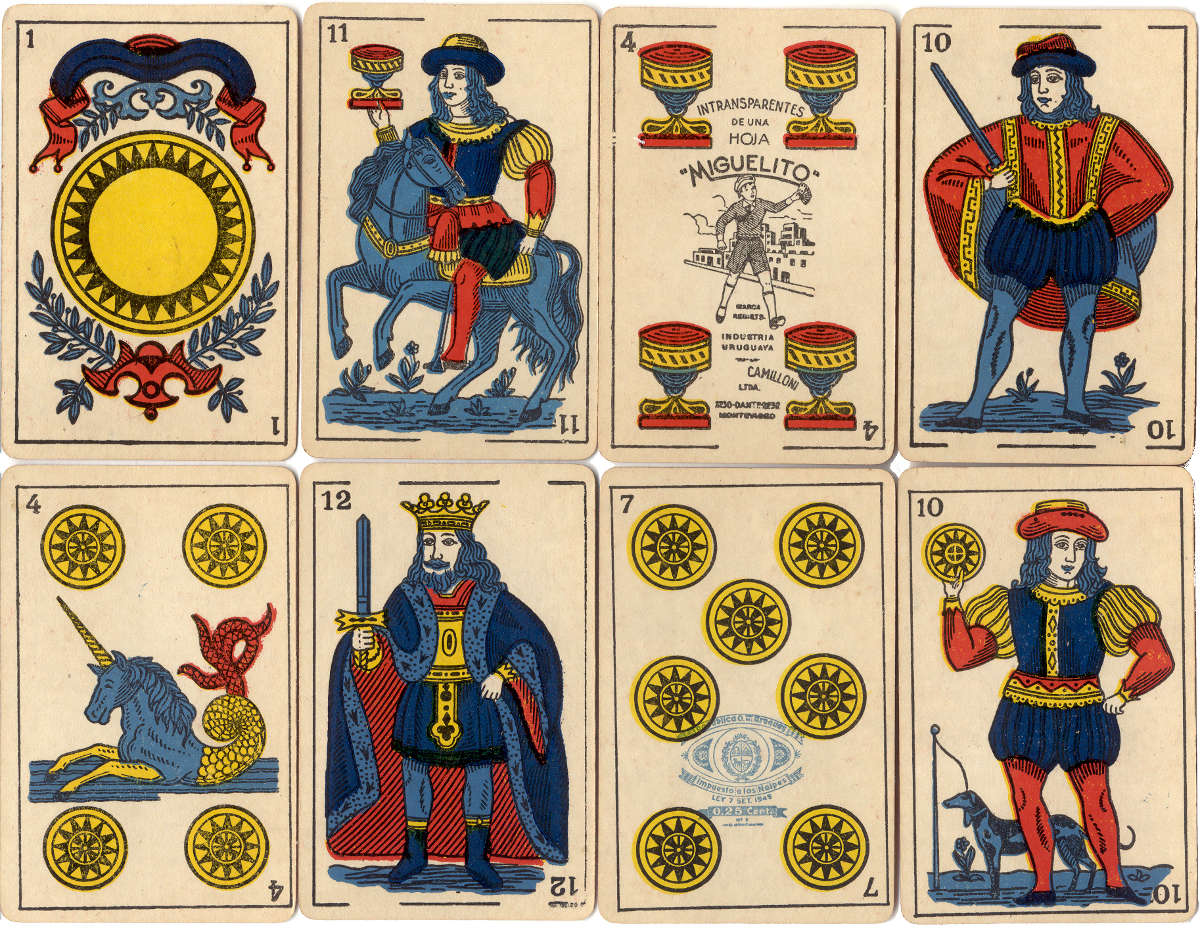
Above: Naipes ‘Miguelito’ manufactured by Camilloni Ltda, Montevideo, c.1950. 40 cards in box.
Naipes “Tito”

Above: Naipes ‘Tito’ manufactured for ‘Piedra Alta’ by Camilloni Ltda, Montevideo, 1950s. 40 cards in box, same Parisian Spanish pattern designs. It is a curious feature of this pattern that the king of cups has only one leg!
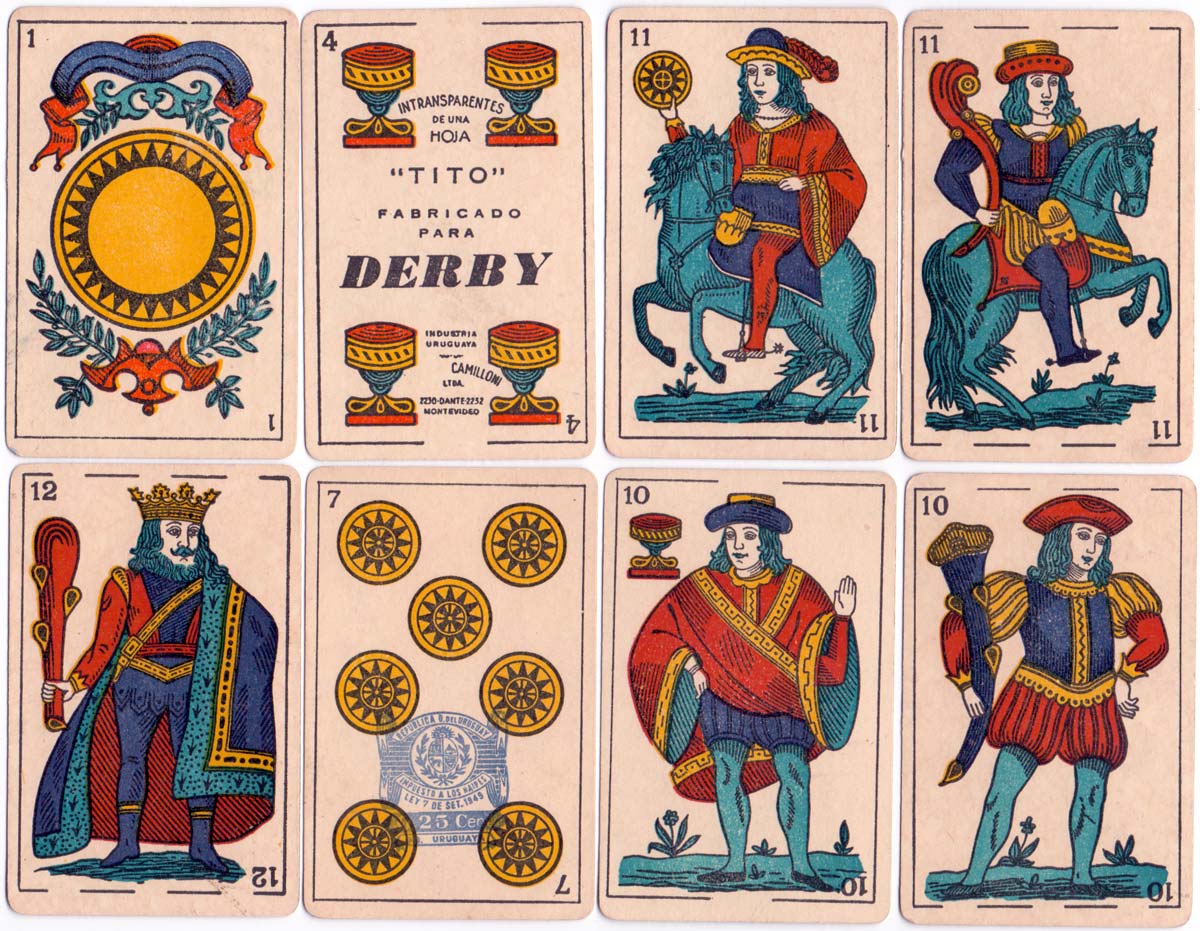
Above: Naipes ‘Tito’ manufactured for ‘Derby’ by Camilloni Ltda, Montevideo, 1950s. 40 cards in box.
Camilloni Hnos also produced Naipes ‘Tela de Araña’.
By Simon Wintle
Spain • Member since February 01, 1996 • Contact
I am the founder of The World of Playing Cards (est. 1996), a website dedicated to the history, artistry and cultural significance of playing cards and tarot. Over the years I have researched various areas of the subject, acquired and traded collections and contributed as a committee member of the IPCS and graphics editor of The Playing-Card journal. Having lived in Chile, England, Wales, and now Spain, these experiences have shaped my work and passion for playing cards. Amongst my achievements is producing a limited-edition replica of a 17th-century English pack using woodblocks and stencils—a labour of love. Today, the World of Playing Cards is a global collaborative project, with my son Adam serving as the technical driving force behind its development. His innovative efforts have helped shape the site into the thriving hub it is today. You are warmly invited to become a contributor and share your enthusiasm.

Leave a Reply
Your Name
Just nowRelated Articles
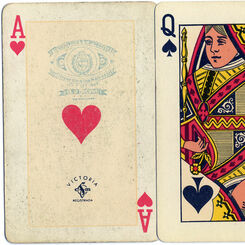
Naipes Victoria
Victoria playing cards manufactured in Uruguay by Compañía General de Fósforos Montevideana, c.1955....

Chocolondo by Famosa
Chocolondo Waffle deck for Famosa.
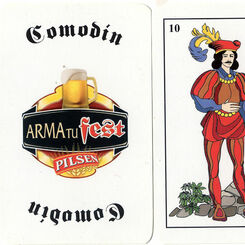
Pilsen Trucofest
Pilsen Trucofest playing cards, Uruguay.
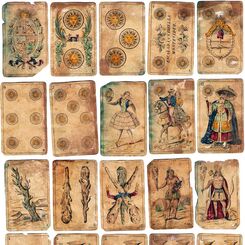
Uruguayan Playing Cards
Until the 19th century playing cards were imported into Uruguay from Spain.
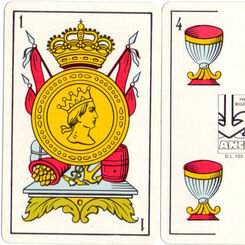
Naipes ‘Ancla’
Naipes opacos ‘Ancla’ manufactured by Cía General de Fósforos Montevideana S.A. c.1980.
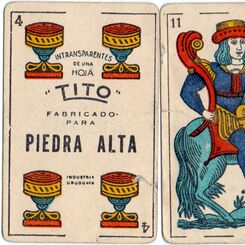
Naipes ‘Tito’, Camilloni Hnos
Naipes ‘Tito’, Camilloni Hnos, Montevideo, c.1950.
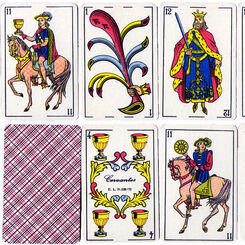
Naipes ‘El Gaucho’ by Cervantes S.A., Montevideo, c.1970s
Naipes ‘El Gaucho’ manufactured and distributed by Cervantes S.A., Montevideo, c.1970s.

Argenar, Buenos Aires, c.1980
The reverse has advertising for Cymaco motor spares who have branches in Uruguay.
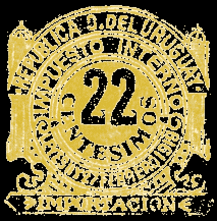
Uruguay playing card tax
In 1806 the Council of Concepción del Uruguay imposed an 8 Peso tax on card and billiard tables on a...
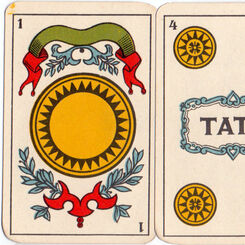
Naipes Tatú
Naipes Tatú, M.C. de Casabó S.A., Montevideo, c.1956
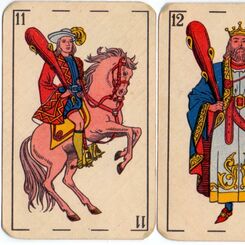
Naipes “El Gaucho”, c.1955-60
Naipes “El Gaucho” Manufactured by Gráficos Unidos S.A., Montevideo, c.1955-60

The ‘Parisian’ Spanish pattern
A version of the old Spanish National pattern which was manufactured by Parisian card makers in the ...
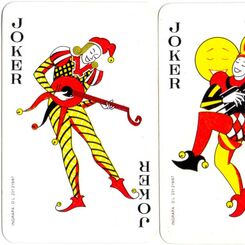
Naipes 210 made by Industria Gráfica Papelera S.A.
Naipes '210' playing cards made in Uruguay by Industria Gráfica Papelera S.A. (Ingrapa), c.1990.

Cía General de Fósforos Montevideana
The design of these Spanish-suited cards is the same Spanish Catalan style as used by their sister c...
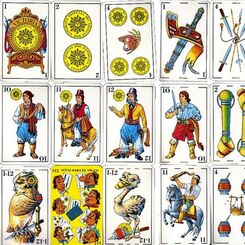
Naipes Victoria Gaucho-themed pack, c.1975
Naipes Victoria Spanish-suited, gaucho-themed pack celebrates the culture and traditions of the gauc...
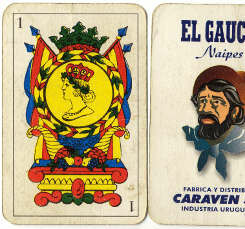
Naipes ‘El Gaucho’
Naipes ‘El Gaucho’ manufactured and distributed by Caraven S.A., Montevideo, Uruguay, c.1990s.
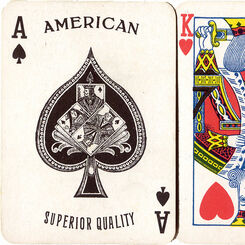
Naipes ‘American’
Naipes ‘American’ by M.C. de CASABÓ Ltda, Montevideo, c.1950.
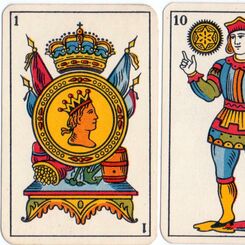
Naipes ‘Bambú’
Naipes ‘Bambú’ manufactured by M.C. de Casabó Ltda, Montevideo, c.1950

Spanish playing cards for Yerba Armiño
Spanish-suited playing cards for Yerba Armiño, anonymous manufacturer probably made in China.

Popular heroes and celebrities
Miniature children's playing cards depicting popular heroes and celebrities on the backs, Montevideo...
Most Popular
Our top articles from the past 60 days


 Your comment here. Your comment here. Your comment here. Your comment here. Your comment here. Your comment here. Your comment here. Your comment here. Your comment here. Your comment here. Your comment here. Your comment here. Your comment here. Your comment here. Your comment here. Your comment here. Your comment here. Your comment here. Your comment here. Your comment here. Your comment here. Your comment here. Your comment here. Your comment here. Your comment here. Your comment here. Your comment here. Your comment here. Your comment here. Your comment here. Your comment here. Your comment here.
Your comment here. Your comment here. Your comment here. Your comment here. Your comment here. Your comment here. Your comment here. Your comment here. Your comment here. Your comment here. Your comment here. Your comment here. Your comment here. Your comment here. Your comment here. Your comment here. Your comment here. Your comment here. Your comment here. Your comment here. Your comment here. Your comment here. Your comment here. Your comment here. Your comment here. Your comment here. Your comment here. Your comment here. Your comment here. Your comment here. Your comment here. Your comment here.




















